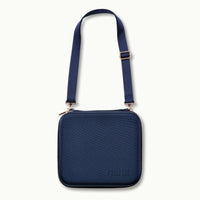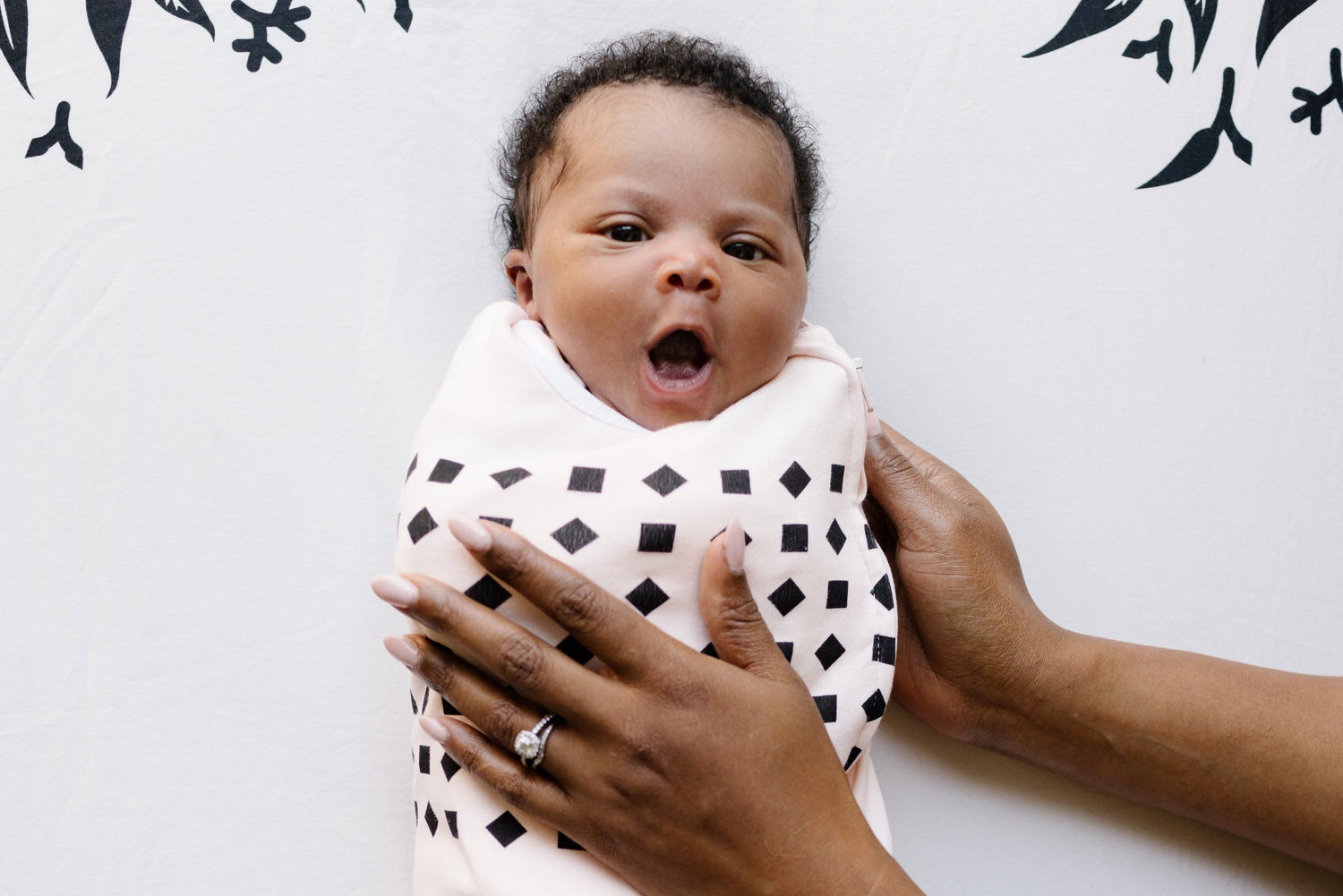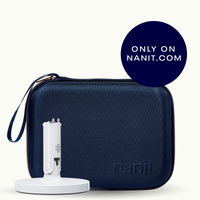As adults, we don’t even think about whether we’re breathing through our noses or our mouths.
Newborns however breathe exclusively through their noses. At what point do babies start breathing through their mouths too? Unless they are crying, infants do not typically breathe through their mouths until around 4 months of age.
Developmental milestones in breathing
Newborns have a respiratory pathway that is different from an older baby’s respiratory pathway. Newborns are designed so they can breathe comfortably while feeding. Nasal breathing helps prevent aspiration of milk while feeding. Nasal breathing also humidifies and warms the inhaled air, as well as decontaminates it.
What causes mouth breathing?
Once babies are developmentally able to breathe through their mouths AND their noses, they will seamlessly alternate between the two. However there are some situations where babies almost exclusively breathe through their mouths. Mouth breathing is often a completely natural response if your child is crying or has a stuffy nose. But if a child relies solely on mouth breathing, there may be other factors at play. So, when do babies breathe through their mouths?
Nasal congestion
Newborns sneeze a lot. This congestion is expected. Because they are breathing exclusively through their nose, the normal mucus can get dry and not easily clear with a sneeze. Their inability to breathe through their mouths results in noisy whistling sounds. A stuffy nose is not always associated with an illness but is often a normal and expected finding in newborn nose breathers. For children older than 4 months, the nasal congestion may result in mouth breathing to maintain adequate oxygenation.
Once your baby is 3-4 months old, their congestion will likely result in mouth breathing. In some instances the nasal congestion can be caused by respiratory infections. If your baby is showing signs they are sick, the management for congestion is typically supportive with nasal saline spray to help lubricate and flush the mucus from their nasal passages.
With any medical conditions, it’s always best to consult with your pediatrician or a medical professional. In general you want to monitor your baby’s comfort of breathing and ensure they are not overly fussy/cranky, and that they are feeding well and fever-free.
Common concerns about mouth breathing
If your child is an occasional or chronic mouth breather, you may wonder why. You may also be concerned about how mouth breathing is affecting your baby’s sleep, development, and growth.
Your physician or medical provider is always a good resource if you’re worried. And if you catch your little one breathing through their mouth somewhat regularly, it’s a good idea to talk to your pediatrician. They can help determine the cause and guide you on the best advice to keep your baby safe and healthy.
Keep nasal passages clear
It is normal for a baby to get stuffed up, but unlike adults, they can’t blow their nose. Congestion can make it harder for infants to sleep and may make them fussier when feeding. They may end up feeding for shorter periods or with more frequency if it is harder to breathe comfortably while drinking.
To help avoid the discomfort of nasal congestion, facilitating the removal of excess mucus from your baby’s nose is recommended. One of the easiest ways to do this is lubricating the nasal passages with saline spray and suctioning the mucus with a nasal aspirator or removing mucus with a nose picker. Another at-home solution to reduce congestion is the use of steam, a humidifier is a great way to add moisture to dry air, or sitting with your baby in the bathroom after running hot water in the shower.
These recommendations are not meant to replace those of a medical professional or pediatrician, so please consult your doctor if you have questions or are unsure of how to manage your baby’s symptoms.
Monitor your baby’s breathing motion with Nanit
Whether you’re a first-time parent or an experienced one, tracking your baby’s breathing motion with Nanit is one easy way to notice patterns and help you identify any change that may warrant monitoring or communication with your pediatrician. An ideal time to monitor breathing motion patterns is while your baby sleeps. You’ll be able to consistently observe their natural, relaxed breath and will receive a notification if breathing motion is no longer detected.
Nanit Pro Baby Monitor and Breathing Band
The Nanit Breathing Band monitors your baby’s breathing motion pattern during nap times and at night when paired with the Nanit Pro Baby Monitor. The camera App reports the time your baby fell asleep, their breaths per minute, the room temperature, and more. If breathing motion is no longer detected, you’ll receive real-time notifications right to your smartphone as well as an alarm sound from the camera itself. Nanit’s Breathing Band is designed not only for accuracy but also for convenience and comfort and is a great companion to Nanit’s Sleep Wear.
Nanit’s Breathing Bands are:
- Soft, 100% cotton
- Machine-washable
- Dryer-safe
- Sensor-free
- Available in three sizes
Our Breathing Wear also includes comfy sleeping bags, pajamas, and swaddles, all with breath-tracking capabilities.
How does the Breathing Band work?
The Breathing Band works in conjunction with the Nanit Pro Camera, a powerful monitor that tracks sleep analytics and captures developmental milestones. Both the wall mount and floor stand provide a clear overhead view of your baby, whether they are in a crib or on a play mat. Plus, a Breathing Band is included for free with the purchase of a Pro Camera.
Through our integrated system, the Pro Camera detects the pattern on our Breathing Wear and records insights in our secure virtual system. Rest easy knowing that the Nanit app will send you alerts for cry detection, too hot or cold room environments, breathing motion irregularities, and more. Should your baby experience prolonged rapid breathing motion or a breathing pattern that is atypical or abnormal, Nanit will alert you in real time so you can assess your baby. The Nanit app also seamlessly connects to our Sound + Light Machine, a combination sound machine and nightlight to foster consistent sleep routines and track sleep pattern data.
Nanit gives you the breathing motion data you need
The more you know about your baby’s natural breathing habits, the better you’ll get at spotting irregularities.
Nanit delivers all the data about your baby’s breathing motion patterns right to your smartphone, helping you to feel comfortable.
Key takeaways
- Babies are born breathing through their noses. They begin to breathe through their mouths around 3 to 4 months old. Nasal breathing is the predominant way that babies breathe. Nasal congestion in infants is common. If your baby is congested, make sure to help them remove the mucus to keep their nasal passages clear.
- Track your baby’s breath patterns. Staying in tune with your baby’s natural breathing rhythms can help parents detect changes or irregularities in their baby’s breathing pattern. Nanit monitors and Integrated Breathing Wear can help, bringing you peace of mind
Sources:
Cleveland Clinic. Mouth Breathing. https://my.clevelandclinic.org/health/diseases/22734-mouth-breathing.
Minnesota Department of Health. Choanal Atresia. https://www.health.state.mn.us/diseases/cy/choanalatresia.html
National Library of Medicine. Frontiers in Pediatrics: Pediatric Airway Pathology. https://www.ncbi.nlm.nih.gov/pmc/articles/PMC7288604/.









































